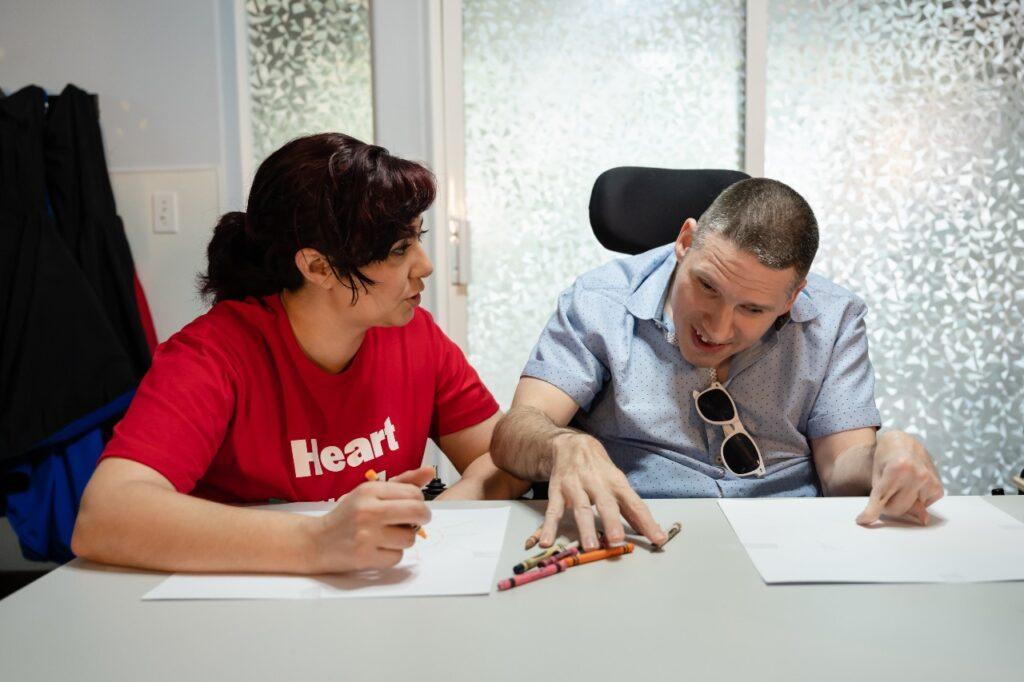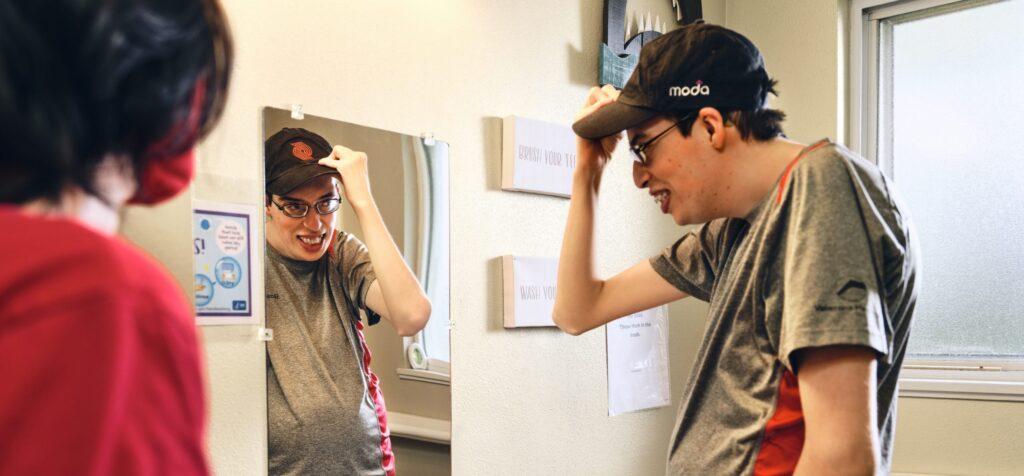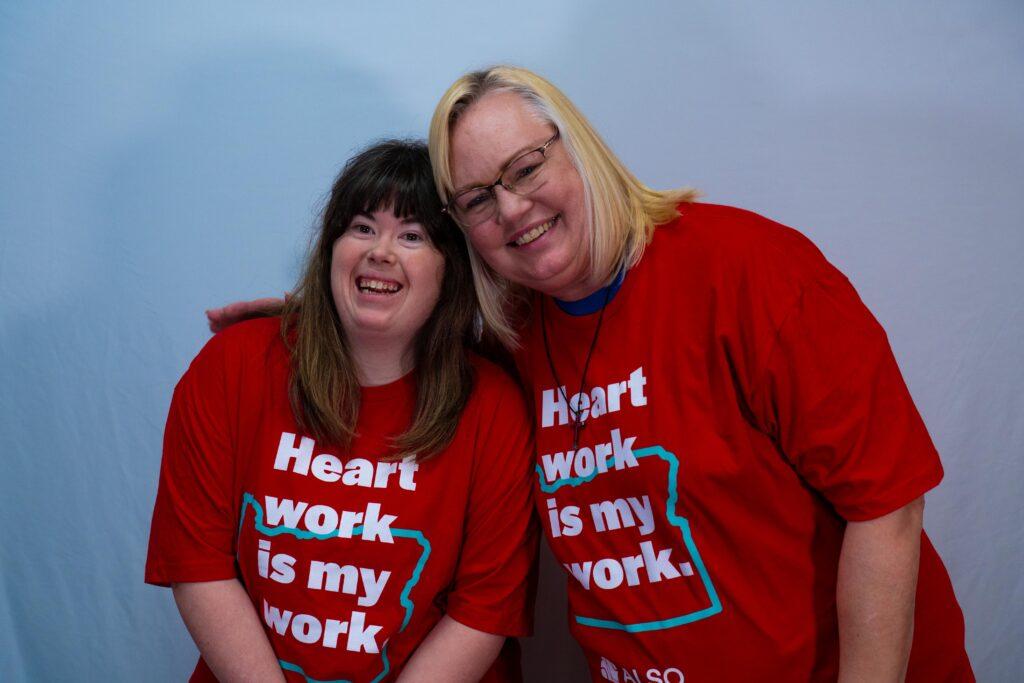Explore the ALSO Children’s Homes Wishlist and help fill the season with joy for the children supported by ALSO.
Explore the ALSO Children’s Homes Wishlist and help fill the season with joy for the children supported by ALSO.

Do you ever go to bed at night thinking about the many things you’ve done during the day? That morning, you pulled yourself out of your slumber, then went to work or school. Maybe later you made meals or did chores. Perhaps it was the weekend, and you hung out with friends at the community pool or went shopping for your sister’s birthday present.
Our lives are filled with daily tasks, activities, and responsibilities. For those of us with a disability, these tasks might be more difficult to complete. The specific limitations depend on what type of disability a person is living with. In addition, it depends on the kind of support we have; and how we balance our strengths, needs, and challenges.
In this blog, the Direct Support Professionals (DSPs) at ALSO provide details on how disabilities can impact the everyday activities of people with intellectual and developmental disabilities. We’ll also describe how individuals with disabilities can thrive in the community alongside their peers without disabilities—as classmates, co-workers, neighbors, and friends.
There are a number of different medical, legal, and social definitions for the word disability. Let’s start with what Merriam-Webster’s Dictionary provides:
“…a physical, mental, cognitive, or developmental condition that impairs, interferes with, or limits a person’s ability to engage in certain tasks or actions or participate in typical daily activities and interactions.” [1]
The term, ‘disability’ refers to individual functioning, [2] such as physical impairment, sensory impairment, cognitive impairment, mental illness, and various chronic illnesses.
When it comes to specifically why disabilities impact daily life and activities, we need to understand how society has often responded to the concept of disability. According to Deborah Kaplan of the World Institute on Disability,[3] two older models of disability, the medical and the rehabilitation model, regard a person’s disability as something that needs to be ‘cured’ or somehow ‘fixed’ in order to fit properly into society’s norms.
The social model, Kaplan says, emphasizes that disabilities are better viewed as part of the human condition, a normal part of everyday life. When policies fail to make reasonable accommodations for varying needs, for example, wheelchair ramps or elevators, this amounts to disability discrimination because it prevents those with physical disabilities from getting to work, school, and even their own living space.
The World Health Organization (WHO) is one of many that has clarified the intersection between the individual with other personal and environmental factors, such as:
These create barriers that interfere with the ability to participate in society on an equal basis. Furthermore, it creates other inequities, like a higher risk of decreased health status, poverty, substandard education, and social exclusion. [5]
LEARNING MORE: The Definition of Disability: Perspective of the Disability Community.[6]

According to WHO, about 1.3 billion people worldwide [7] are experiencing some kind of significant disability. In fact, most of us will experience a temporary or permanent disability at some point in our lives. As the global population of older adults continues to grow, so will incidences of emerging disabilities such as physical and cognitive decline.
The same type of disability never affects different individuals in the same way. One example of this is cerebral palsy (CP) [8], a group of conditions that mainly interferes with movement and posture. Some people with CP also have intellectual disability, epilepsy, or visual impairments.
With this knowledge in mind, let’s talk about 7 ways disabilities can impact everyday life.
ADL refers to the skills needed to take care of oneself. [9] There are two categories of ADLs: basic ADL (BADL) and instrumental ADL (IADL).
BADLs are the skills required to fulfill an individual’s basic needs, such as personal hygiene, self-feeding, grooming, toileting, and walking. IADLs require a higher level of cognitive, attention, and problem-solving skills, such as:
There are many ways to compensate for the functional limitations caused by a disability. Walk-in showers, grab bars, and raised toilet seats are just a few examples of low-tech devices that help people with physical disabilities increase their independence.
LEARN MORE: Home Accessibility Solutions for People with Intellectual/Developmental Disabilities
A sense of community and the ability to nurture social connections [10] is a basic human need. We thrive on the benefits of social interaction. People with disabilities often experience social isolation from their communities due to:
Loneliness is detrimental to a sense of well-being. This leads to real medical and mental health issues, such as depression and anxiety. On the other hand, opportunities for positive social interaction offer several benefits:
The ultimate outcome of positive social interaction is better quality-of-life and improved emotional well-being.
LEARN MORE: The Importance of Life Skills for Young Adults with Disabilities.
Exercise class. Ceramics. Music. Painting. Swimming. Soccer. Nature walks.
Recreational activities help us to express a facet of our personalities that we wouldn’t normally get to express. Possibly they help us escape to a different world for a short time. The need for self-expression and escapism is also an important part of daily life for those of us with disabilities. In addition, there’s a significant association [11] between leisure activities and physical, emotional, and mental health.
The barriers to participation in physical activity and other recreational pursuits are often an issue of limited access. Accessibility has been improving to an extent. For example:
LEARN MORE: The Impact of Gardening for People with Disabilities
The existence of a disability can have a strong impact on educational opportunities. Some of these disabilities include:
Equal access to education has been a long-standing barrier for people with disabilities. It was a common assumption that if someone had a disability (even a mild cognitive impairment) it was impossible for them to learn and contribute to their society. Many decades of strong disability advocacy have resulted in legislation such as the Individuals with Disabilities Education Act (IDEA).
LEARN MORE: Assistive Technology for Students with Disabilities
Even though it’s well-documented that hiring people with disabilities is good for business [12] many employers have incorrect assumptions about hiring someone with a disability, including that reasonable accommodations would be too expensive. These assumptions can be a major barrier to competitive employment.
Searching for a job, filling out an application, and getting and keeping a job can be challenging for someone with impairments in cognitive function. This is why it’s important to have guidance and support from DSPs, vocational specialists, occupational therapists, and caseworkers.
LEARN MORE: The Benefits of Hiring People with Disabilities
At ALSO, we’ve experienced firsthand the excitement that those we support have when they move into their first apartment. Even people considered to have severe cognitive impairments have successfully learned how to take care of themselves, manage a budget, complete chores, and get themselves to work.
A major barrier to independent living isn’t related to someone’s disability, but the current economic climate. Housing has become so expensive that disability benefits don’t cover the housing costs, even with a well-paying job!
LEARN MORE: How Housing Affects Disability Support Services
We often take our many community resources for granted, such as public transportation, city parks, recreation centers, and libraries. The ability to access community resources is an IADL. As we said earlier, IADLs require complex cognitive abilities.
Many areas of the community don’t have the necessary structures (e.g. curb cuts, widened doorways) or assistive technology (such as audio crossing signals) to accommodate disabilities. These constitute environmental barriers that prevent full community inclusion of persons with disabilities.
LEARN MORE: How to be More Inclusive of People with Disabilities in my Community

DSPs and other professional support services such as physical and occupational therapy, social work, counseling, and recreational therapy facilitate independence and improvement so many important skills, including:
In addition, professional support services, especially those at ALSO, help those we support to navigate and break down the barriers that interfere with equal participation in independent community living, competitive employment, and high-quality education. This is why we call ourselves Advocates for Life Skills and Opportunity!
ALSO offers many types of support services that improve every aspect of daily life for the people we support. We are premier service providers for people with developmental and intellectual disabilities. Our disability support services include:
Interested in learning more? Contact us today at info@alsoweb.org or (503) 489-6565.

Sign up for our newsletter to get our latest news, content, and job opportunities.
Help us ensure that everyone has the same opportunities in their home, workplace and community. Let’s make dreams!
